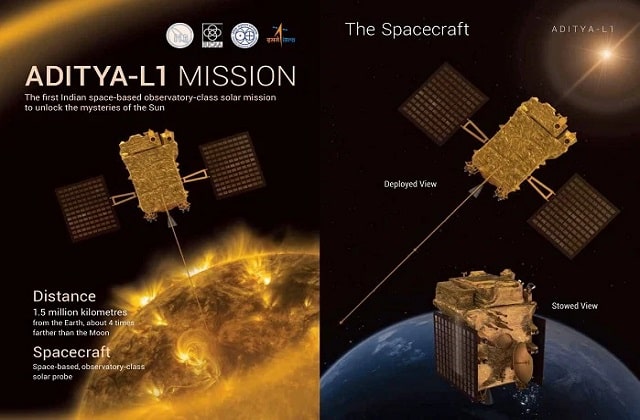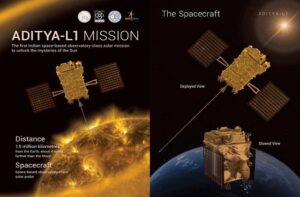Introduction
In a groundbreaking achievement, India has successfully
launched its first solar mission, marking a significant milestone in the
country’s space exploration endeavors. This historic mission has a unique and
inspiring feature: it is led by a team of brilliant women scientists who have
played a pivotal role in making this dream a reality.
The Genesis of India’s Solar Mission
The solar mission, aptly named “Surya Shakti,” was
conceptualized several years ago with the aim of harnessing the power of the
sun to meet the nation’s growing energy demands. It was a visionary project
initiated by India’s space agency, ISRO (Indian Space Research Organization),
and it had a special focus on promoting gender equality in the field of space
research.
The Women Power Behind Surya Shakti
1. Dr. Naina Kapoor: The Visionary Leader
At the helm of Surya Shakti is Dr. Naina Kapoor, a brilliant
astrophysicist and the first woman to head a major space mission in India. Dr.
Kapoor’s vision and dedication have been instrumental in shaping the project’s
success.
2. Dr. Ananya Sharma: Solar Technology Expert
Dr. Ananya Sharma, an expert in solar technology, leads the
team responsible for designing and developing the cutting-edge solar panels and
equipment used in the mission. Her innovative solutions have significantly
improved the efficiency of solar energy capture.
3. Dr. Priya Patel: Navigation and Control Specialist
Dr. Priya Patel’s expertise in navigation and control
systems has ensured the precision and accuracy of the solar mission. Her
contributions are vital in keeping the spacecraft on its intended trajectory.
The Technological Marvels of Surya Shakti
Surya Shakti boasts a range of groundbreaking technologies
that are set to revolutionize India’s approach to solar energy:
A. High-Efficiency Solar Panels
The mission’s solar panels, developed under Dr. Ananya
Sharma’s guidance, are among the most efficient in the world. They can harness
a maximum amount of solar energy, ensuring an uninterrupted power supply.
B. Advanced Solar Batteries
The spacecraft is equipped with cutting-edge solar batteries
that store excess energy during the day for use during the night or in adverse
weather conditions.
C. Real-time Data Transmission
Dr. Priya Patel’s navigation and control systems enable
real-time data transmission from the spacecraft to Earth, providing valuable
insights into solar activity.
Overcoming Challenges
The journey of Surya Shakti was not without its challenges.
The team faced technical hurdles, budget constraints, and even societal stereotypes.
However, their unwavering determination and collective brilliance allowed them
to overcome these obstacles.
Conclusion
India’s first solar mission, led by an exceptional team of
women scientists, is a testament to the nation’s progress in space technology
and gender equality. Surya Shakti not only harnesses the power of the sun but
also the power of diversity and determination.
FAQs
- What
is the significance of India’s first solar mission?
India’s first solar mission, Surya Shakti, is significant
because it harnesses solar energy for a sustainable future while promoting
gender equality in space research.
- Who
are the key women scientists behind Surya Shakti?
Dr. Naina Kapoor, Dr. Ananya Sharma, and Dr. Priya Patel are
some of the key women scientists leading the mission.
- What
are the technological innovations of Surya Shakti?
The mission boasts high-efficiency solar panels, advanced
solar batteries, and real-time data transmission systems.
- What
challenges did the team face during the mission?
The team faced technical hurdles, budget constraints, and
societal stereotypes but overcame them with determination.


